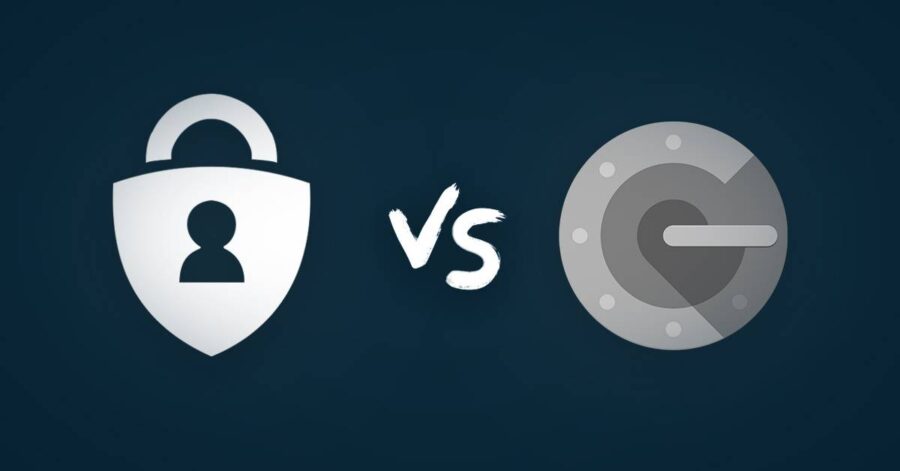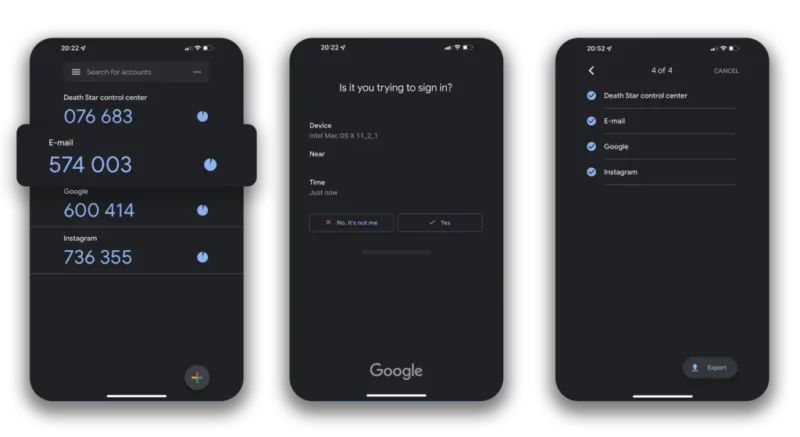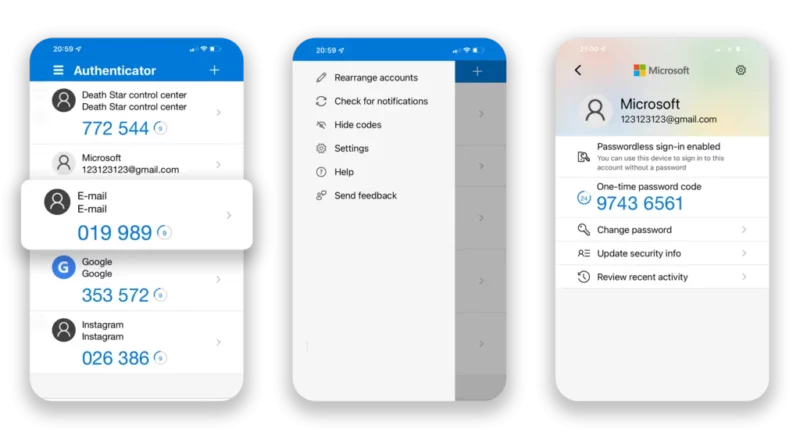Google and Microsoft develop two of the most popular 2FA apps. As is the case with everything these companies release, the question arises, who’s is better? Google Authenticator vs Microsoft Authenticator

Who has the Better 2FA App in 2024? Google Authenticator vs Microsoft Authenticator
Two-Factor Authentication (2FA) is a simple yet effective tool to prevent cyber breaches. Enabling 2FA adds an extra layer of security to your sensitive data, requiring a synchronised one-time-password (OTP) for account login. Meaning that if a cybercriminal obtains a user’s password, they cannot gain access to the account, without the user’s physical device.
2FA is a small yet powerful addition to your cybersecurity toolkit and can save you a lot of trouble in the long run. The simplicity of this tool has propelled its popularity. More than ever, people are enabling 2FA on their accounts. While the traditional 2FA process was done via SMS, many organisations are now opting for using 2FA apps instead, to avoid text fees.
Unsurprisingly, tech giants Google and Microsoft develop the most popular of these apps. As is the case with everything these companies release, the question arises, who’s is better? Google Authenticator Vs Microsoft Authenticator.
Google Authenticator
Thanks to its simplicity and user friendliness, Google Authenticator is a popular 2FA app. Readily available on both iOS and Android, the app makes the process of adding accounts easy. Simply scan an account QR code using the app’s in-built reader, and you’re away.

Unfortunately, the authenticator’s simplicity comes at the cost of it’s features, providing considerably less than it’s Microsoft counterpart.
Firstly, the Google Authenticator app lacks the ability to enable security measures such as PIN, Fingerprint or Face ID, to gain entry. Subsequently, if anyone has access to your device, they have access to your Google authenticator codes.
Furthermore, Google authenticator doesn’t allow the ability to sync accounts between devices. If you get a new phone, you must manually add all your accounts again. A tedious and time-consuming process that you must repeat for each new device.
Despite its somewhat limited features, Google Authenticator remains efficient and reliable in terms of core functionality and serves its purpose as a 2FA app.
Microsoft Authenticator
The Microsoft Authenticator app is also available on both iOS and Android and shares much of the same functionality as Google Authenticator. What sets it apart from its competitor is its comprehensive list of features, which make it a powerful yet simplistic cyber security tool.

The app itself offers password locking and can have Face ID and Fingerprint Sensor login enabled, providing an additional layer of security to users. The authenticator is especially advantageous for those who already utilise Microsoft software, as the app integrates Microsoft accounts seamlessly.
The automatic back up of all accounts, is one of the apps most significant advantages, and allows users to restore their account credentials in the event of a stolen or lost device. Additionally, users can set up the app on multiple devices simultaneously, which makes the process of migrating data to new devices substantially easier.
The newest addition to the app is the number matching feature. When users enable this feature, an OTP, displayed on the device which a login attempt occurs, must be entered into their authenticator app to grant approval. This feature safeguards against accidental MFA approval or becoming victim to MFA fatigue attacks, in which cybercriminals spam approval requests at users until they concede and approve the request.
Google Authenticator vs Microsoft Authenticator
- Microsoft Authenticator can support one account on multiple devices simultaneously while Google Authenticator is limited to one device per account.
- Only Microsoft Authenticator supports backup and restore features.
- Google Authenticator doesn’t require a password to access the app, decreasing its security.
- Google Authenticator is easier to use than Microsoft Authenticator.
- Microsoft Authenticator has more features than Google Authenticator.
Conclusion
While both applications are similar in serving the same function, the extensive number of features available with Microsoft Authenticator places it ahead of its competitor.
With features such as multi-device support, backup and restore, push notifications, and biometric authentication, we recommend using Microsoft Authenticator as your 2FA of choice.
Google Authenticator does serve its purpose, but its biggest limitation is its inability to password-lock the app itself, which is a surprisingly obvious oversight and significantly damages the authenticator’s overall security. An authenticator which relies so heavily on the security of the device it is on, is difficult to recommend.
Furthermore, if you already utilise Microsoft software, the decision becomes a no-brainer as connecting your respective accounts becomes a breeze.
This being said, utilising either of these 2FA apps is better than not having MFA in place at all. Implementing multi-factor authentication across your business’s endpoint devices is a cost effective cyber security solution which a surprising number of organisations are failing to do.
Leverage these tools in your organisation
For more information on how you can leverage authenticators in your organisation, we offer a free IT audit to help you establish a solid foundation for your future growth. Our audit is designed to identify any loopholes or weaknesses in your infrastructure and ensure that you have the latest threat management tools and updates in place.




